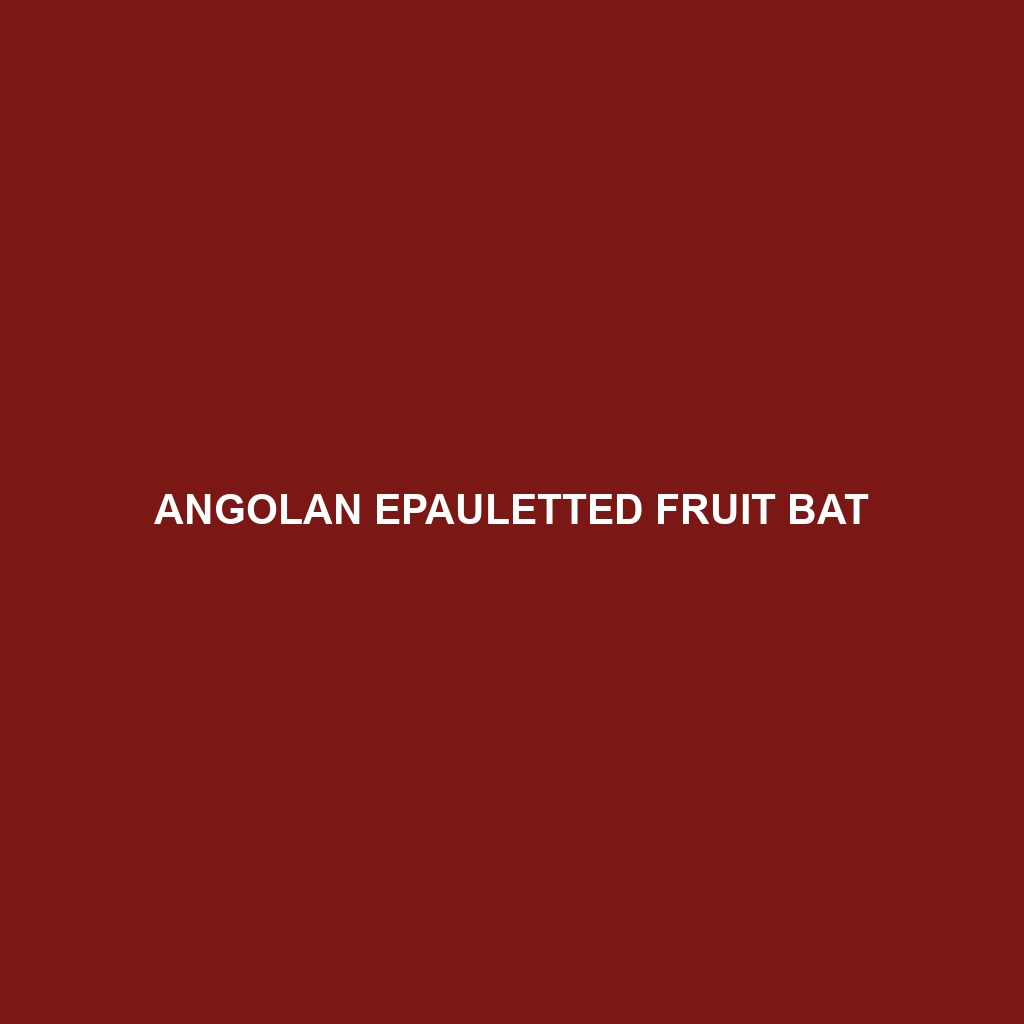Angolan Epauletted Fruit Bat
Common Name: Angolan Epauletted Fruit Bat
Scientific Name: Micropteropus angolensis
Habitat
The Angolan Epauletted Fruit Bat is primarily found in the tropical forests and woodlands of Angola, with populations also reported in parts of the Democratic Republic of the Congo and neighboring countries. These bats prefer humid environments, often roosting in caves, tree hollows, and sometimes within human-made structures. Their habitat is characterized by dense foliage, which provides ample cover and an abundance of fruiting plants.
Physical Characteristics
Angolan Epauletted Fruit Bats are medium-sized bats, typically weighing between 150 to 200 grams. They possess a distinctive fur coloration, ranging from light brown to dark gray. One of their most notable features is the epaulette-like tufts of fur on their shoulders, which can appear more pronounced in males. Their wingspan can reach up to 50 centimeters, allowing for agile flight through their forested habitats.
Behavior
These bats are predominantly nocturnal, emerging at dusk to forage for food. They are social creatures, often found roosting in groups, which can number in the hundreds. Angolan Epauletted Fruit Bats exhibit a unique behavior known as “tent-making,” where they fold leaves to create temporary shelters while resting. Their vocalizations play a role in communication, particularly during mating season.
Diet
The diet of the Angolan Epauletted Fruit Bat primarily consists of fruits, particularly figs and soft-skinned berries. They are important pollinators and seed dispersers within their ecosystem, aiding in the growth of various plant species. Their feeding habits often involve a methodical approach, where they utilize their keen sense of smell to locate ripe fruit.
Reproduction
Reproductive habits of Angolan Epauletted Fruit Bats typically peak during the rainy season, with a gestation period of about three months. Females usually give birth to a single pup, which they nurse until it is capable of flight. Males engage in competitive displays and vocalizations to attract females, showcasing their strength and health in the process.
Conservation Status
Currently, the Angolan Epauletted Fruit Bat is classified as vulnerable due to habitat loss caused by deforestation and human encroachment. Conservation efforts are essential to protect their natural habitats and ensure the survival of this species. Awareness and education about their ecological role can aid in their preservation.
Interesting Facts
- Angolan Epauletted Fruit Bats have excellent night vision, which allows them to navigate through dense forests in the dark.
- They are known for their long-distance flying capabilities, enabling them to travel several kilometers in search of food.
- This species can live up to 15 years in the wild, with some individuals reaching up to 20 years in captivity.
Role in Ecosystem
The Angolan Epauletted Fruit Bat plays a vital role in its ecosystem as a key pollinator and seed disperser. By consuming fruits and spreading seeds over wide areas, they contribute to forest regeneration and biodiversity. Their activities support various plant species, which in turn provide habitat and food for other wildlife, establishing a crucial connection in the food web.
